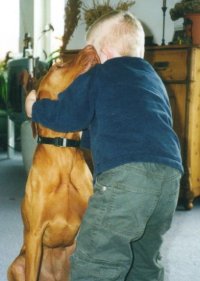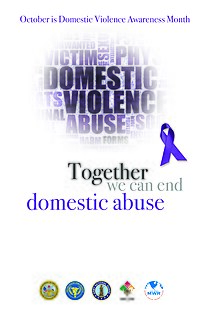An occupational therapist (OT) works with a client to help them achieve a fulfilled and satisfied state in life through the use of "purposeful activity or interventions designed to achieve occupational outcomes which promote health, prevent injury or disability to develop, improve, sustain or restore the highest possible level of independence."
In sociology, a minority group refers to a category of people who experience relative disadvantage as compared to members of a dominant social group. Minority group membership is typically based on differences in observable characteristics or practices, such as: ethnicity, race, religion, sexual orientation, disability, or gender identity. Utilizing the framework of intersectionality, it is important to recognize that an individual may simultaneously hold membership in multiple minority groups. Likewise, individuals may also be part of a minority group in regard to some characteristics, but part of a dominant group in regard to others.

Shiretoko National Park covers most of the Shiretoko Peninsula at the northeastern tip of the island of Hokkaidō, Japan. The word "Shiretoko" is derived from an Ainu word "sir etok", meaning "the place where the earth protrudes".

Animal-assisted therapy (AAT) is an alternative or complementary type of therapy that involves animals as a form of treatment. It falls under the realm of Animal Assisted Interventions (AAI). AAI is general term that encompasses any intervention or treatment that includes an animal in a therapeutic context such as Emotional-Support Animals, Service/Assistance Animals, and Animal Assisted Activity (AAA). AAT contains sub-sections based on the type of animal, the targeted population, and how the animal is being incorporated into the therapeutic plan. The most commonly used types of AAT are canine-assisted therapy and equine-assisted therapy. The goal of AAT is to improve a patient's social, emotional, or cognitive functioning and literature reviews state that animals can be useful for educational and motivational effectiveness for participants. There are various studies documenting the positive effects of AAT reported through subjective self-rating scales and objective physiological measures, such as blood pressure, hormone levels, etc.
Occupational science is a discipline in the social and behavioral sciences dedicated to the study of humans as "doers" or "occupational beings". As used here, the term "occupation" refers to the goal-directed activities that characterize daily human life as well as the characteristics and patterns of purposeful activity that occur over lifetimes as these affect health and well-being.
Sexual abuse, also referred to as molestation, is usually undesired sexual behavior by one person upon another. It is often perpetrated using force or by taking advantage of another. When force is immediate, of short duration, or infrequent, it is called sexual assault. The offender is referred to as a sexual abuser or molester. The term also covers any behavior by an adult or older adolescent towards a child to stimulate any of the involved sexually. The use of a child, or other individuals younger than the age of consent, for sexual stimulation is referred to as child sexual abuse or statutory rape.
The Developmental, Individual-differences, Relationship-based (DIR) model is a developmental model for assessing and understanding any child's strengths and weaknesses. It has become particularly effective at identifying the unique developmental profiles and developing programs for children experiencing developmental delays due to autism, autism spectrum disorders, or other developmental disorders. This Model was developed by Dr. Stanley Greenspan and first outlined in 1979 in his book Intelligence and Adaptation. Evidence for the efficacy of DIR/Floortime includes results from randomized controlled trials of DIR/Floortime and the DIR/Floortime-based P.L.A.Y. Project; because of various limitations in these studies, the existing evidence is deemed to "weakly support" the efficacy of Floortime.
Sensory integration therapy is based on A. Jean Ayres' Sensory Integration Theory.
Occupational inequality is the unequal treatment of people based on gender, sexuality, height, weight, accent, or race in the workplace. When researchers study trends in occupational inequality they usually focus on distribution or allocation pattern of groups across occupations, for example, the distribution of men compared to women in a certain occupation. Secondly, they focus on the link between occupation and income, for example, comparing the income of whites with blacks in the same occupation.

Anna Jean Ayres was an American occupational therapist, educational psychologist and advocate for individuals with special needs. She became known for her work on sensory integration (SI) theory.
Occupational segregation is the distribution of workers across and within occupations, based upon demographic characteristics, most often gender. Occupational segregation levels differ on a basis of perfect segregation and integration. Perfect segregation occurs where any given occupation employs only one group. Perfect integration, on the other hand, occurs where each group holds the same proportion of positions in an occupation as it holds in the labor force.

Domestic violence is violence or other abuse by one person against another in a domestic setting, such as in marriage or cohabitation. It may be termed intimate partner violence when committed by a spouse or partner in an intimate relationship against the other spouse or partner, and can take place in heterosexual or same-sex relationships, or between former spouses or partners. Domestic violence can also involve violence against children, parents, or the elderly. It takes a number of forms, including physical, verbal, emotional, economic, religious, reproductive, and sexual abuse, which can range from subtle, coercive forms to marital rape and to violent physical abuse such as choking, beating, female genital mutilation, and acid throwing that results in disfigurement or death. Domestic murders include stoning, bride burning, honor killings, and dowry deaths.
This article discusses occupational therapy (OT) in the United Kingdom.

Over time, the approach to cerebral palsy management has shifted away from narrow attempts to fix individual physical problems – such as spasticity in a particular limb – to making such treatments part of a larger goal of maximizing the person's independence and community engagement. Much of childhood therapy is aimed at improving gait and walking. Approximately 60% of people with CP are able to walk independently or with aids at adulthood. However, the evidence base for the effectiveness of intervention programs reflecting the philosophy of independence has not yet caught up: effective interventions for body structures and functions have a strong evidence base, but evidence is lacking for effective interventions targeted toward participation, environment, or personal factors. There is also no good evidence to show that an intervention that is effective at the body-specific level will result in an improvement at the activity level, or vice versa. Although such cross-over benefit might happen, not enough high-quality studies have been done to demonstrate it.
Driver rehabilitation is a type of rehabilitation that helps individuals facing challenges caused by a disability or age to achieve safe, independent driving or transportation options through education or information dissemination. Professionals who work in the field use adaptive equipment and modified vehicles to help people attain independent transportation.

The management of domestic violence deals with the treatment of victims of domestic violence and preventing repetitions of such violence. The response to domestic violence in Western countries is typically a combined effort between law enforcement, social services and health care. The role of each has evolved as domestic violence has been brought more into public view.
Occupational injustice derives from the concept of occupational justice, which originated in 1997 with social scientists Anne Wilcock of Australia and Elizabeth Townsend of Canada. As a particular application of social justice, occupational injustice occurs when a person is denied, excluded from or deprived of opportunity to pursue meaningful occupations or when unchosen occupations are imposed upon them thus limiting life satisfaction. The construct of occupational rights stems from human rights but focuses on the inherent right of individuals to participate in occupations, construed as their personally meaningful and goal-directed use of time. Through this participation, occupational rights contribute to fulfillment and self-actualization. Groups of people that may be vulnerable to experiencing occupational injustices include cultural, religious, and ethnic minority groups, child labourers, the unemployed, prisoners, persons with substance use disorder, refugees, and/or women.

Domestic violence in same-sex relationships is a pattern of violence or abuse that occurs within same-sex relationships. Domestic violence is an issue that affects people of any sexuality, but there are issues that affect victims of same-sex domestic violence specifically. These issues include homophobia, HIV and AIDS stigma, STD risk and other health issues, lack of legal support, and the violence they face being considered less serious than heterosexual domestic violence. Moreover, the issue of domestic violence in same-sex relationships has not been studied as comprehensively as domestic violence in heterosexual relationships. However, there are legal changes being made to help victims of domestic violence in same-sex relationships, as well as organizations that cater specifically to victims of domestic violence in same-sex relationships.












